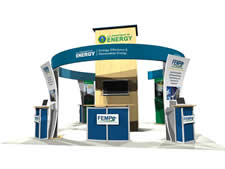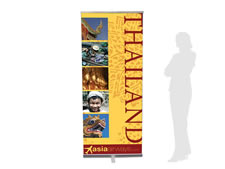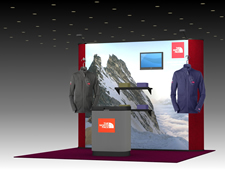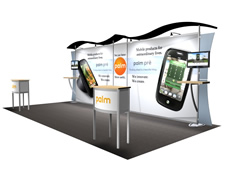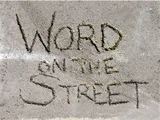
Word on the Street by Kevin Carty
When to Order from Classic Exhibits vs. ClassicMODUL
This is a topic that comes up quite frequently, and I apologize for not addressing it sooner (or at least more often).
Here is the “2-Second Answer”: When you want it turnkey, order from Classic Exhibits, but if you want to order the extrusion and build it yourself, order from ClassicMODUL.
Now, here is the longer, more detail answer.
Let’s use the analogy of building a home as the example.
Option #1: If you are building a new home and decide to build it yourself, then you essentially become your own contractor. You coordinate with the foundation people, the lumber company, the flooring company, the cabinet folks, etc. They may provide advice and guidance regarding materials, quantities, and installation, but you are the contractor on this job. You order what you need and bring in expertise when you need it. In this case, the final cost to your client includes your labor and project management in addition to the cost of the materials.
Option #2: You go to a home builder and select the floor plan, the finishes, and the appliances and they build the home from start to finish. The builder is the contractor. The final cost is based on the contractor’s time and materials.
It’s not that different when working with Classic Exhibits or ClassicMODUL.
 ClassicMODUL is like the lumber broker. You can buy full lengths or pre-cut lengths of metal from ClassicMODUL to build your display in-house. But you may not get full CAD drawings, packing details, or Project Management support as part of the basic package. Those are line item additions (as requested). Instead, you receive the metal, functional CAD drawings (where appropriate), and a bill of materials.
ClassicMODUL is like the lumber broker. You can buy full lengths or pre-cut lengths of metal from ClassicMODUL to build your display in-house. But you may not get full CAD drawings, packing details, or Project Management support as part of the basic package. Those are line item additions (as requested). Instead, you receive the metal, functional CAD drawings (where appropriate), and a bill of materials.
But it’s important to remember that ClassicMODUL is more than extrusions. There is also a full line of retail and POP accessories. Literally hundreds of options.
ClassicMODUL’s primary competitors are AGAM and Octanorm. In our humble opinion, ClassicMODUL has significantly better customer service, West Coast and East Coast Distribution hubs, and the knowledge and support of a company that knows how to build exhibits (Classic Exhibits). Frankly, there’s no comparison between ClassicMODUL and the other two.
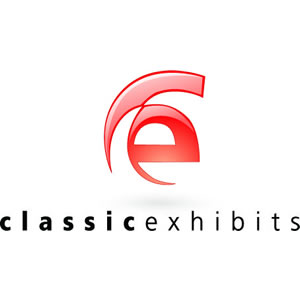 Classic Exhibits on the other hand is like the full service contractor. You work with our design team (or yours) to create the ideal display for your client, then we do the rest. Turnkey! Our Project Managers take care of creating the detailed CAD drawings, set-up instructions, packaging instructions, ordering graphics, monitor the project through Production, including doing a full set-up, taking photos, and making any final recommendations.
Classic Exhibits on the other hand is like the full service contractor. You work with our design team (or yours) to create the ideal display for your client, then we do the rest. Turnkey! Our Project Managers take care of creating the detailed CAD drawings, set-up instructions, packaging instructions, ordering graphics, monitor the project through Production, including doing a full set-up, taking photos, and making any final recommendations.
Technically, Classic Exhibits has competitors, such as Nimlok, Nomadic, Skyline, etc. But, to be honest, they are competitors only in the sense that they manufacture portable/modular exhibits.
From time to time, you will hear a Classic Exhibits Project Manager, Designer, Mel or me recommend that you order directly from ClassicMODUL. This may come into play on POP and/or retail projects that are done in multiples, or a large project with mostly metal. Often they do not require complicated assembly, design, or project management so we’ll recommend that you call Tom Jones at ClassicMODUL. Or, we’ll send you to ClassicMODUL because your project management team has extensive experience working with aluminum extrusion systems, and it makes sense to work directly with the extrusion provider.
On a final unrelated note, if you haven’t completed the Classic Exhibits survey sent last week, please take a moment to do so. We want to hear from you!
–Kevin Carty
http://twitter.com/kevin_carty
http://www.linkedin.com/pub/kevin-carty/3/800/32a




